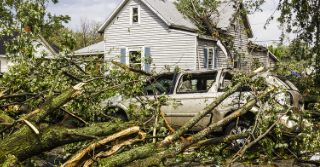Here are the three most important steps to protecting your business — and your wallet — against severe weather damage:
- Find the right policy for your business. It is bad enough to get trapped in a severe storm — and even worse, also getting trapped in an ill-fitting insurance policy. Not all policies offer the same coverage. A typical commercial property policy will not cover damage from floods, hurricanes, or earthquakes. You may need to request additional “rider” policies to get the coverage you need. While this added coverage could increase overall insurance plan costs, you can help keep your premium low by bundling multiple policies with one provider and taking steps to prevent storm-related damage to your property.
- Protect your property to keep your premium low. Insurance companies often reward clients for taking measures to protect their properties against storm damage. For example, when property owners remove vegetation and other kindling, some insurers offer discounts for adding these buffers against fire around properties. If you live in an area with frequent high wind storms, wind-resistant doors and stormproof windows could help protect your business while also decreasing your premium. Another good reason to take steps to protect your property: Not all insurance policies cover what is inside your business. Check with your provider to ensure your policy covers the building frame and your property inside.
- Understand your policy’s replacement cost versus actual cash value coverage. Most commercial property insurance plans will provide replacement cost coverage or cash value coverage. While both of these features are designed to reimburse you for damage to your business and belongings housed there, they do not offer the same coverage level.[br][br]Replacement cost coverage compensates you for the cost to repair or rebuild your property based on construction costs. Since replacement cost is not based on the market value of your property, it will not account for the value of your land.[br][br]Actual cash value coverage will also pay to help you repair or rebuild your property, but under this type of coverage, insurers deduct the depreciation cost from the value you receive. If the depreciation level is high and you only have actual cash value coverage, it may cost more to rebuild your business than what your insurer is willing to pay.[br][br]Talk with your insurance agent about whether your policy provides replacement cost coverage or actual cash coverage to determine which is more appropriate for your business.
Protect yourself today from whatever tomorrow may bring
The trick to protecting your business from severe weather is to take steps before a storm hits. Act now because you cannot purchase insurance after your property has already been damaged.



